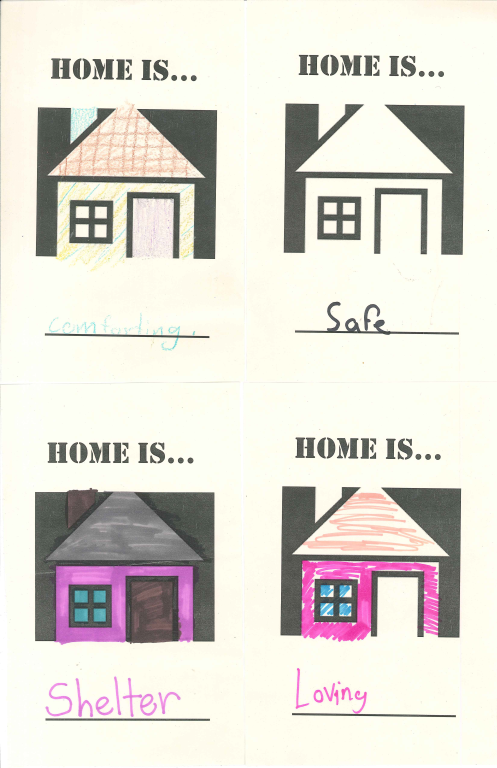Angel calls Habitat for Humanity home a dream come true
When Angel and Patrick’s kids open presents in their Twin Cities Habitat for Humanity home this Christmas it will be a dream made true through two...

We all need to feel safe and secure in our lives, but kids need it most of all.
 Earlier this year, Habitat’s Youth and Family program visited schools and had kids reflect on what home means to them. Some descriptions were: “safe,” “comforting,” “shelter,” and “loving.” Unfortunately, not every child can count on a stable, healthy home.
Earlier this year, Habitat’s Youth and Family program visited schools and had kids reflect on what home means to them. Some descriptions were: “safe,” “comforting,” “shelter,” and “loving.” Unfortunately, not every child can count on a stable, healthy home.
Low-income children move three times as often as their peers. Parents who are struggling to make ends meet may be at the mercy of landlords, who can jack up the rent without notice, refuse to make repairs, or even put the property at risk of foreclosure.
Sometimes families are faced with the decision to move, in order to find a safer neighborhood for their children.
“Life in apartments was hard. Little space, issues like mold, intoxicated people, smokers, and violence were our nightmares,” said Habitat homeowner Alemayehu Geleta, when she described the family’s rental experience.
For kids, moving into a new place often means missing school days. Moving can also mean changing schools and all the stress that accompanies that change. Can you recall the fear in the pit of your belly when you had to navigate a new school and face new classmates and new teachers? What if you had to do that over and over again? The result is often significant educational loss:
 • In Minnesota, elementary school kids who moved 3 or more times had reading scores that were half those of kids who did not move
• In Minnesota, elementary school kids who moved 3 or more times had reading scores that were half those of kids who did not move
• Children who move at least three times between the ages of 4 and 7 are 13 percent less likely to graduate from high school
One out of every five low-income children lives in an overcrowded home, twice the overall average (1). For young children, overcrowding can rob them of “down time”, which is critical for their development. Everyday events like naptime, playtime, and bedtime may all be compromised. Not having quiet space to read, concentrate, or sleep soundly, they are more likely than their peers to have lower reading skills, feel helpless, act out in school, and develop psychological problems(2).

Last year, Twin Cities Habitat served 175 children. In the past five years, we’ve made sure 768 kids enjoy the comfort of a decent, warm, stable home.
“To me, my Habitat home means NO cockroaches. It means you can't hear people yelling downstairs while you are studying. It means that you get more family time,” said 10-year-old Tsion Wogu, when we asked what was special about his St. Paul Habitat home.
Sounds like a “safe,” “comforting,” and “loving” home, doesn’t it?
[1] Vandivere, S., Hair, E. Theokas,C., Cleveland, K., McNamara, M., and Atienza, A. (2006). How Housing Affects Child Well-Being. Funders’ Network for Smart Growth and Livable Communities, Coral Gables, FL.
[2] Roy, J., Weiss, E., & Maynard, M. (2008). The Hidden Costs of the Housing Crisis: The Long-Term Impact of Housing Affordability and Quality on Young Children’s Odds of Success. Partnership for America’s Economic Success, Pew Charitable Trust.
Your gift unlocks bright futures! Donate now to create, preserve, and promote affordable homeownership in the Twin Cities.

When Angel and Patrick’s kids open presents in their Twin Cities Habitat for Humanity home this Christmas it will be a dream made true through two...

“We’re home!” 10-year-old Nadine and her 3-year-old sister Nama shout as they pull up to their Habitat home in Brooklyn Park. Their mother, Rosemary,...

It has taken nearly ten years of hard work and determination for the Millington Family, but they finally saw their dream come to life in early June...